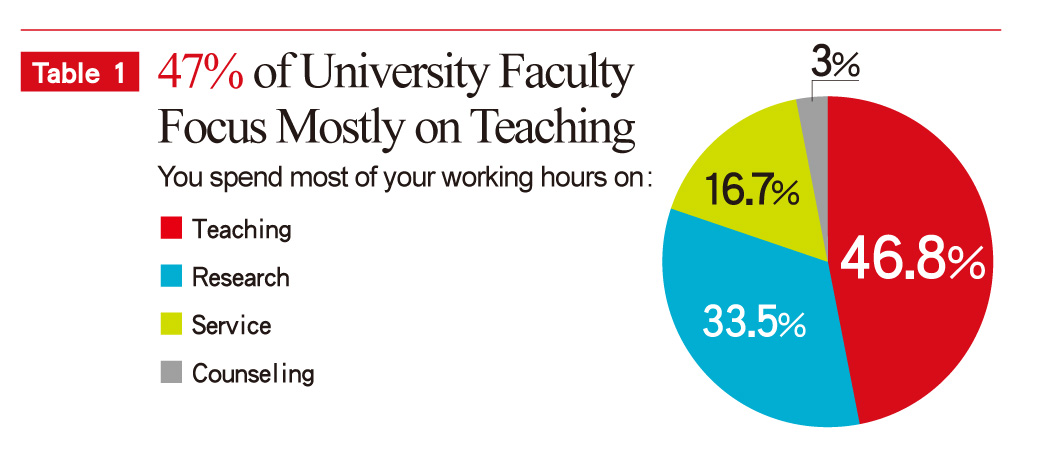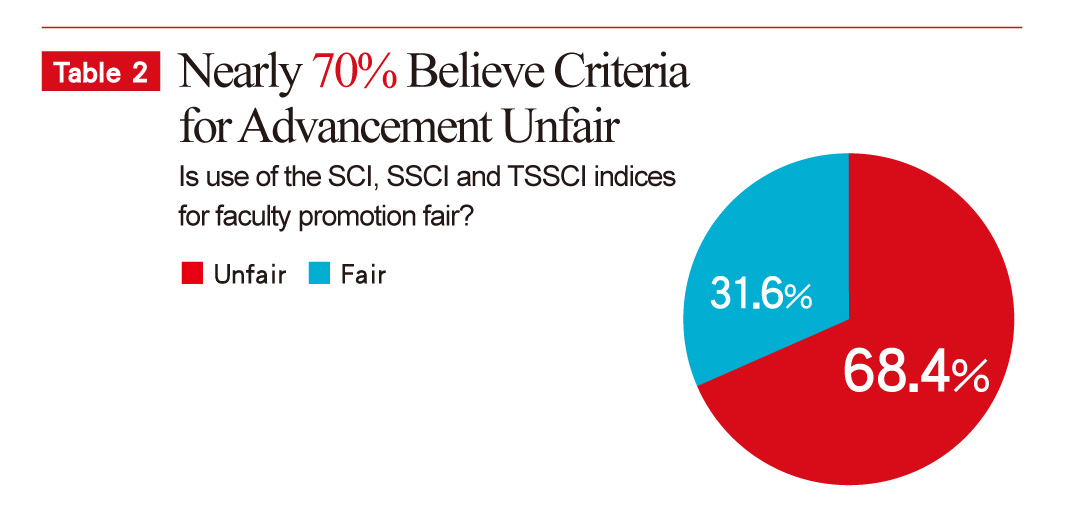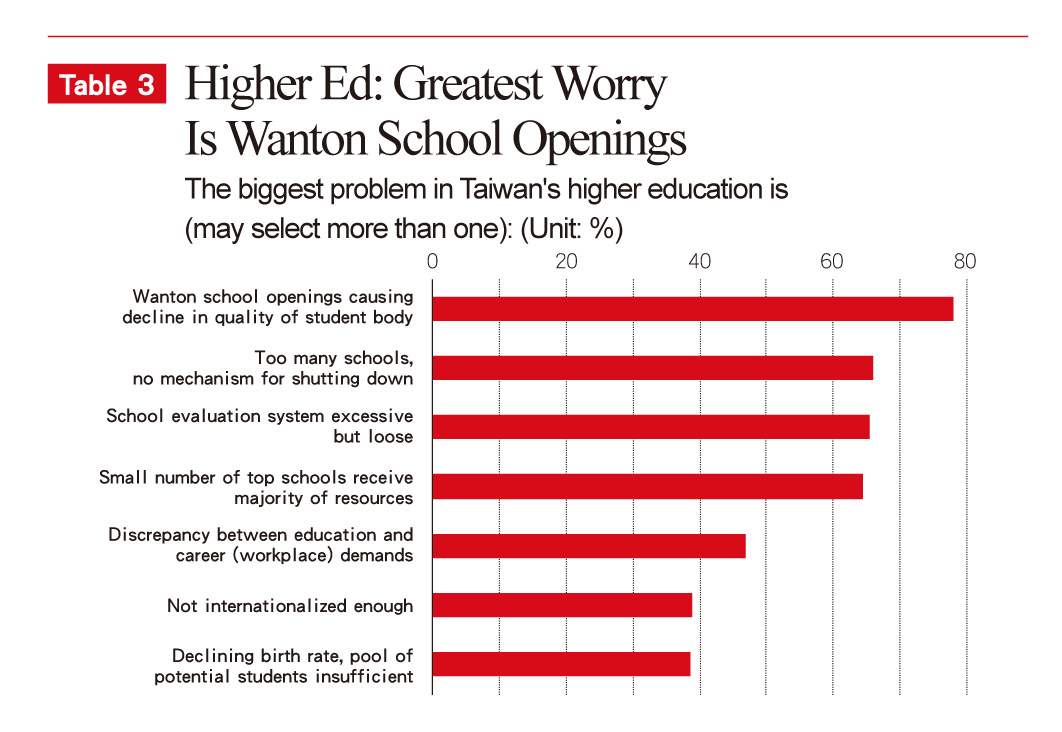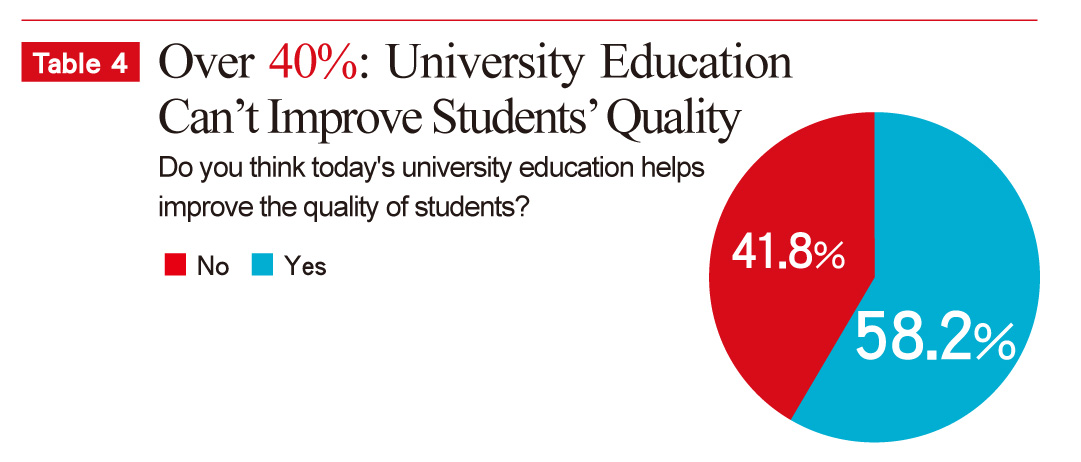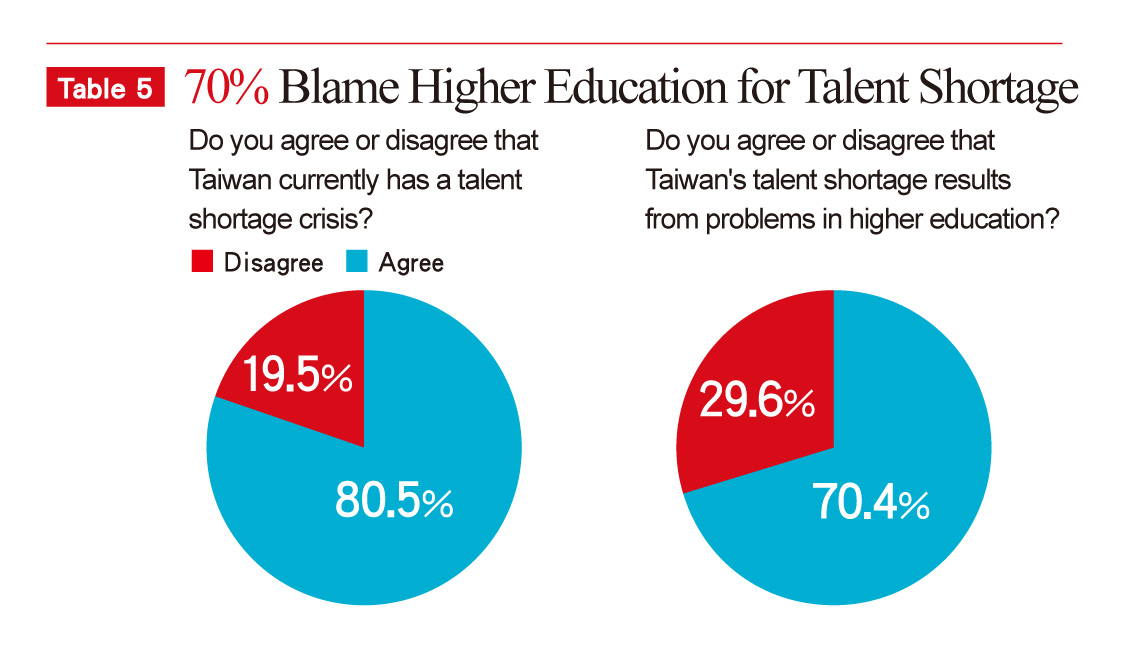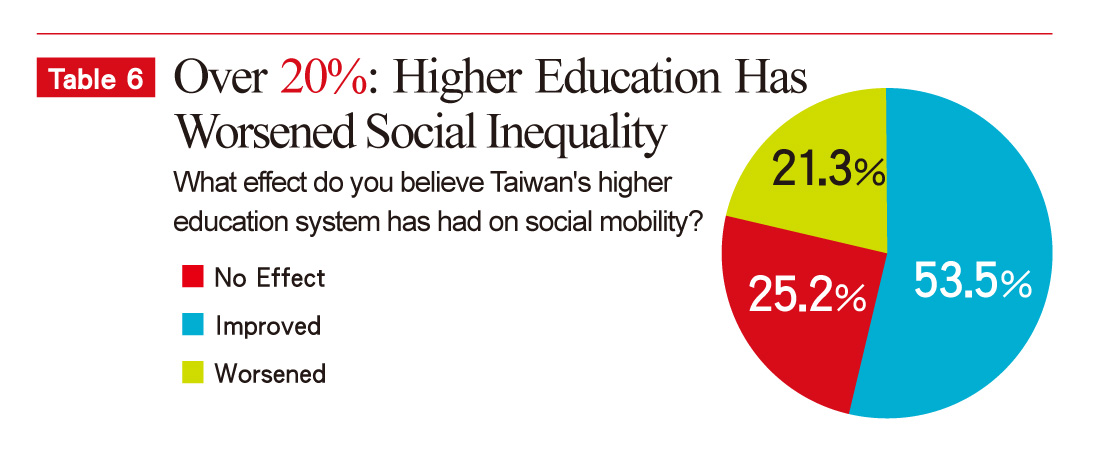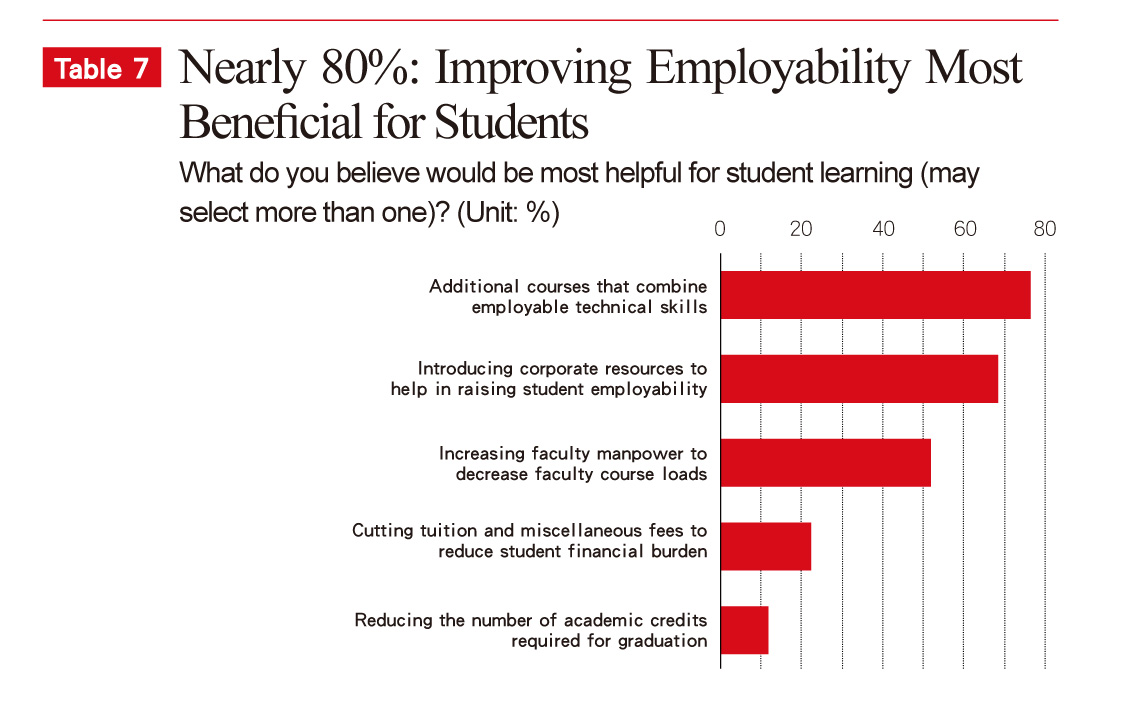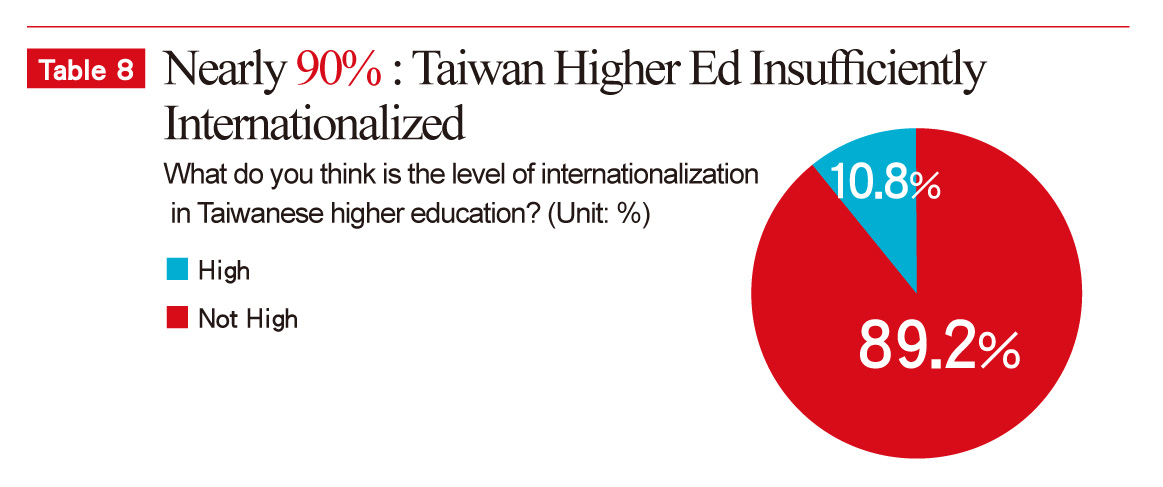Higher Education Survey
66% of Professors: We Don't Oppose School Closures!
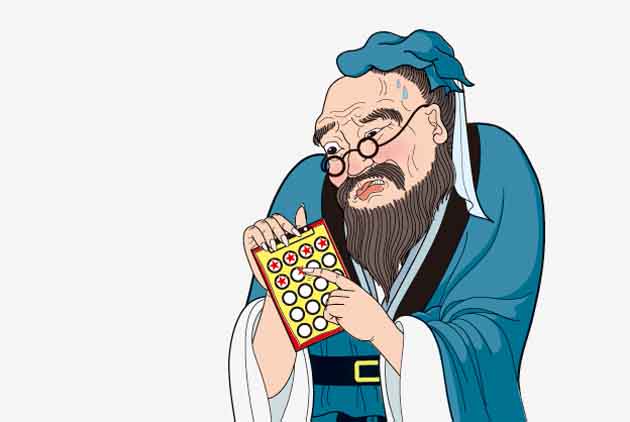
Source:cw
Taiwan's universities have slid into a quagmire of diminished performance. CommonWealth Magazine's first poll of university educators seeks to find a way out for higher education.
Views
66% of Professors: We Don't Oppose School Closures!
By Ting-feng WuFrom CommonWealth Magazine (vol. 507 )
A talent gap in the job market, overly depressed wages, degrees that go unused, recruitment difficulties, insufficient internationalization: these all-too-familiar criticisms are constantly leveled at Taiwan's institutions of higher education.
The question is, with all its attendant thorny issues, what is the actual current state of higher education in Taiwan? What needs to be changed? CommonWealth Magazine conducted a poll of the nation's university professors to find out the answers to these questions.
This "white paper diagnosing Taiwanese higher education" shows that the primary work focus for most faculty members remains teaching. Just under 47 percent of faculty members said they spent most of their time on "teaching," followed by "research" (33.5 percent) and "service" (16.7 percent). (Table 1)
Yet respondents also felt teaching was not the academic activity for which faculty members were most highly rewarded. A full 86 percent believed that "research" scored highest in evaluations for faculty advancement, only then followed by "teaching."
Since it was established a little less than a year ago, the Taiwan Higher Education Union has been relentlessly criticizing the academic evaluation system for what it describes as "emphasis on research and light regard for teaching." Last week, it formally launched a protest.
The Union maintains that another problem in the evaluation process is that the Science Citation Index (SCI), Social Science Citation Index (SSCI), Taiwan Social Science Citation Index (TSSCI) and other academic paper publication indices have become important measures of actual academic capabilities and achievements. When asked whether use of the indices in considering faculty member advancement was fair, nearly 70 percent of respondents expressed dissatisfaction with the use of indices in evaluations. (Table 2)
The sole exceptions were among faculty at "top tier" schools that have received NT$50 billion in funding over the past five years. At top-tier schools, 67 percent of faculty said they spent the majority of their time on research, not teaching, with the result that 46 percent of faculty members at those schools were favorably disposed to the indexed advancement system.
The dividing line between "research" and "teaching-oriented" universities has been starkly drawn. Yet how to get faculties to endorse an "appropriate" and "well-suited" evaluation system, and then to induce positive behaviors, remains a problem.
Erroneous Evaluations, Misplaced Resources
What's more, evaluations are meant to ensure that administrative resources are being allocated in the most effective direction.
When asked to choose one or more responses to the question, "What are some of the biggest problems in Taiwanese higher education?" the top four answers, in order, were: "Wanton school openings causing decline in quality of student body" (78 percent); "Too many schools, no mechanism for shutting down" (66 percent); "School evaluation system excessive but loose" (65.5 percent)" and "Small number of top schools receive majority of resources" (64.4 percent). (Table 3)
The fact is that these four major issues are all related to imbalances in resource allocation.
In the early years of Taiwan's higher education reform, there was a vast expansion in university construction to break free of the elitist-oriented narrow admissions threshold of the unified entrance examination system. When admissions standards were lowered, the character and quality of the student body followed in decline.
The decline in the quality of the student body is closely tied to "decreased student willingness to study," and this is what pains faculty members most. Nearly 80 percent of respondents acknowledged that this is the issue in higher education that most concerns them. That "faculty compensation is lower than in neighboring countries" ranked second to last among faculty concerns.
The crisis of declining birthrates has furthermore exacerbated the problem of a "surplus" of universities, forcing faculty members to become personally involved in the struggle for resources. A track record for "recruiting" has already become one of the "obligations" of many university faculties. The poll results found that 34 percent of responding faculty members admitted feeling pressure to recruit students.
A little cross-referencing shows that privately funded universities have been hardest hit by the low birthrate crisis. Faculty members at private technological universities felt the greatest pressure to recruit students (69 percent), followed by faculty at private liberal arts universities (35 percent).
Against the backdrop of the declining quality of the student body and a shrinking pool of potential new students, fully 66 percent of respondents said they would not necessarily rule out schools "withdrawing from the field" as a means of addressing the issue of too many institutions, and cross-referencing shows the gap between respondents at public and private universities is negligible.
If there is no way to resolve the ongoing imbalance in resource allocation, many institutions may become ensnared in a series of connected dilemmas, as schools perform poorly but cannot close down, and professors want to teach well but lack the resources.
The Ministry of Education's investment of NT$50 billion spread out among top tier schools has also generated a feeling of relative deprivation among faculty members at other schools.
What Can Be Done to Save the Students?
Higher education is a pre-employment starting line and also serves as a ladder for social mobility. Yet when posed the question, "Do you think today's university education helps improve the character of students?" more than 40 percent of respondents said they believe a university education has absolutely no impact on improving the character of students. (Table 4)
The decline in the quality of the student body has naturally led to a "talent gap." Nearly 80 percent of respondents agreed that there is a talent shortage crisis in Taiwan, while 70 percent also agreed that the talent shortage is related to higher education losing its way. (Table 5)
Respondents' views on the question of whether higher education has helped to promote social mobility also showed divergence. Those that believed higher education had the effect of improving social mobility accounted for 54 percent, while just over a quarter of respondents believed that it had no effect whatsoever. The remaining 21 percent were even more critical, maintaining that higher education had the reverse effect, actually "worsening" social inequality. (Table 6)
So what exactly should higher education do if it is to be of any help at all to students?
Respondents believed that the two most effective approaches would be "additional courses that combine employable technical skills" (76.5 percent) and "introducing corporate resources to help in raising student employability" (68.6 percent). (Table 7)
It's plain that curriculum reform and faculty reform are the key points. Indeed, there is broad consensus that curricula should be made more practical and more akin to what might be encountered in the workplace.
It was not only within the technical schools that this consensus appeared, as even faculty members on the campuses of top-tier "research universities" recognized the need to come down from their ivory towers.
Why Is a Cornerstone of Society Snarling?
Another of the most frequently mentioned skills students are expected to attain is the ability to adapt to an international climate. Generally speaking, as many as 90 percent of respondents believed Taiwanese higher education lacks internationalization (Table 8), while more than 80 percent felt that efforts should be made to increase the degree of internationalization at Taiwan's institutes of higher learning.
While accepting students from China cannot be equated with "internationalization," it remains the most aggressively promoted policy element. As regards policy on students from China, 52 percent of survey respondents advocated that "recruitment should be gradually expanded," while 22 percent even believed that "restrictions should be immediately relaxed with no quota on student numbers," with minimal intercollegiate difference of opinion. (Table 9)
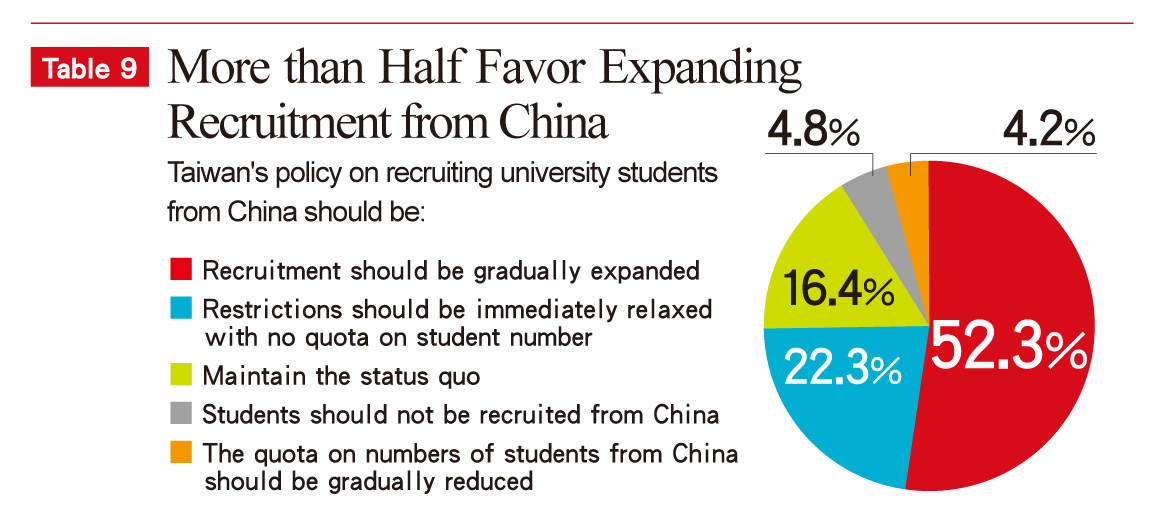
The throng of university educators gathered in front of the Ministry of Education on September 28 (Confucius's birthday) chose to commemorate that day which honors teachers by engaging in public protest.
"What on earth is it that has this most stable cornerstone of society snarling like that?" asked one educator. CommonWealth Magazine, in its first opinion poll of university educators, has attempted to provide some answers.
Translated from the Chinese by Brian Kennedy
About the Survey
The "Survey of Higher Education" was conducted Sept. 11-14 2012 via CommonWealth Magazine Group's closed network, polling subscribers employed as university educators, with a return of 2,211 valid questionnaires. Public and private universities accounted for 42 percent and 58 percent of returned valid questionnaires, respectively. Of these, 64 percent came from liberal arts universities and 36 percent from technical universities. In terms of faculty positions, 23 percent of respondents were professors, 29 percent associate professors, 33 percent assistant professors, 14 percent lecturers and 1 percent project-appointed assistant professors.

